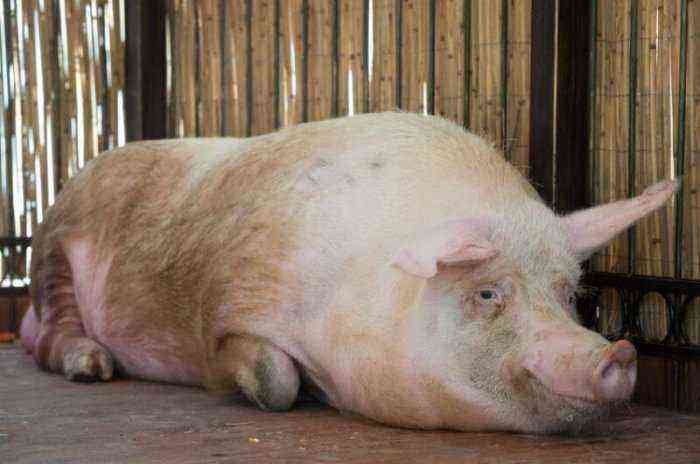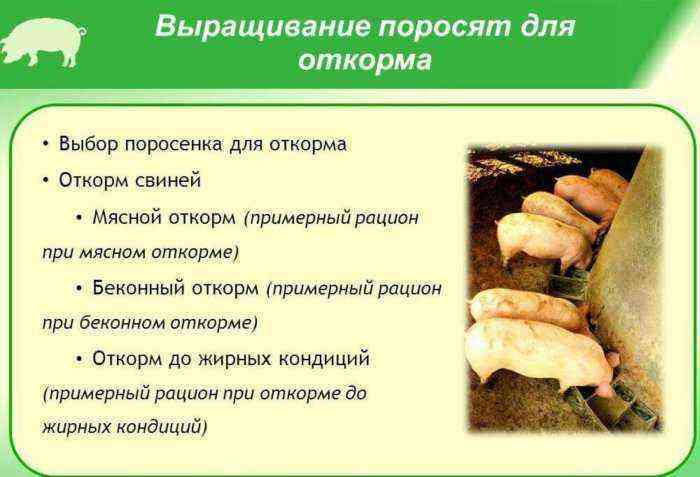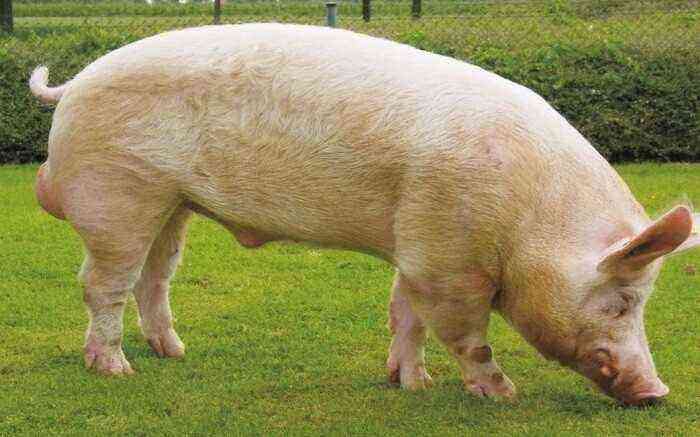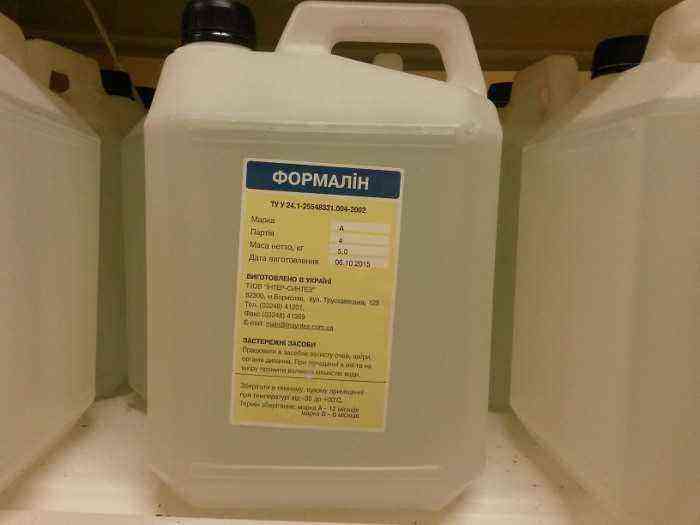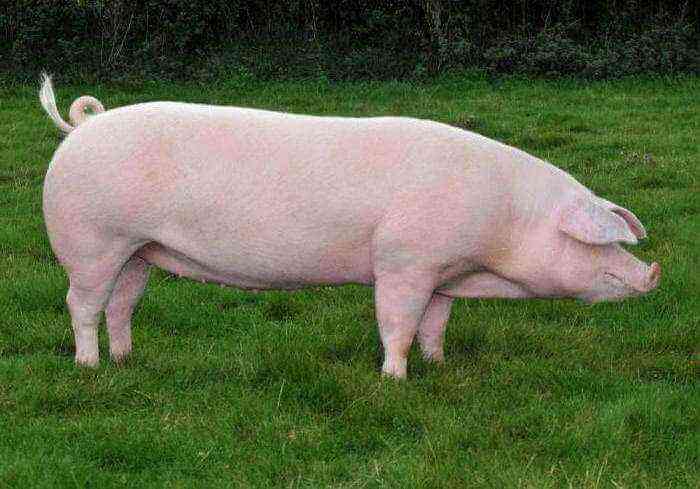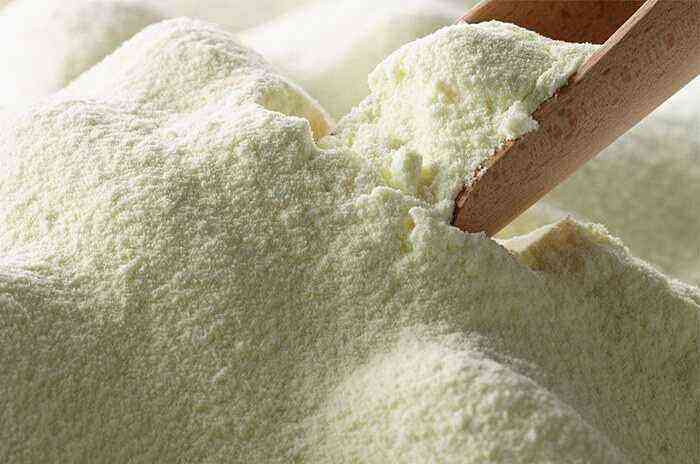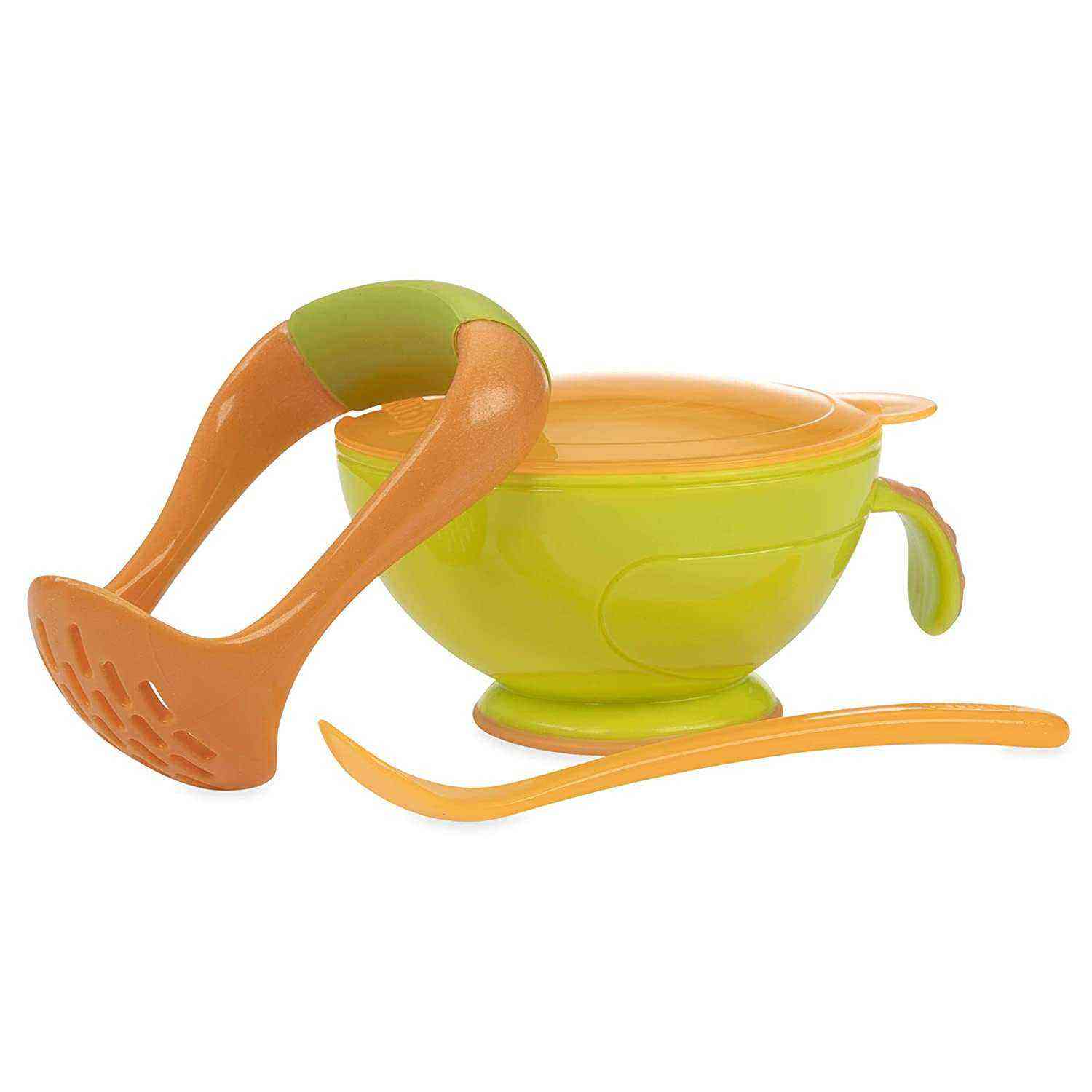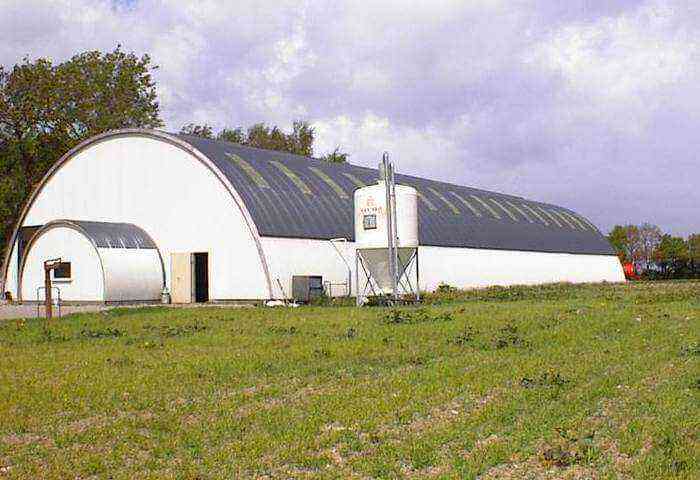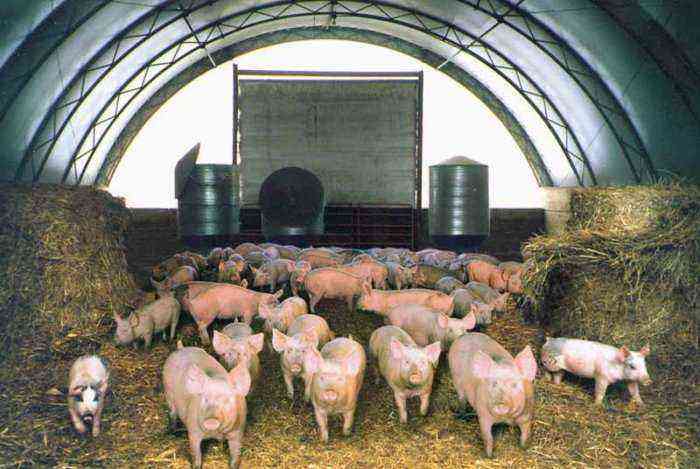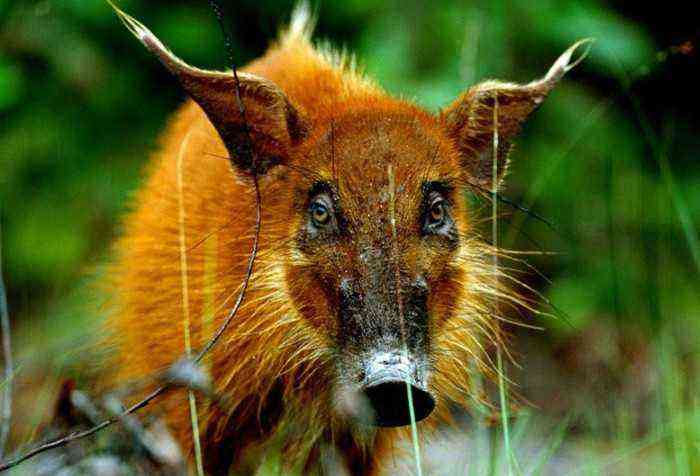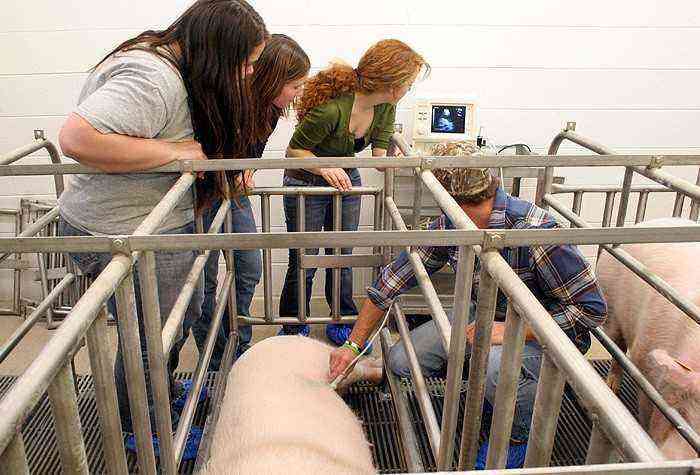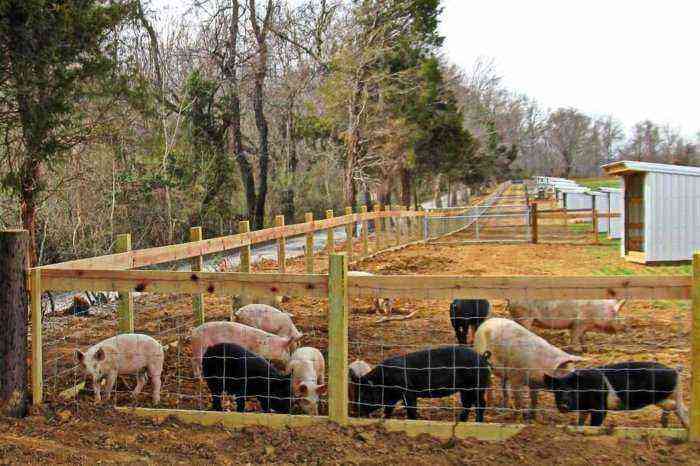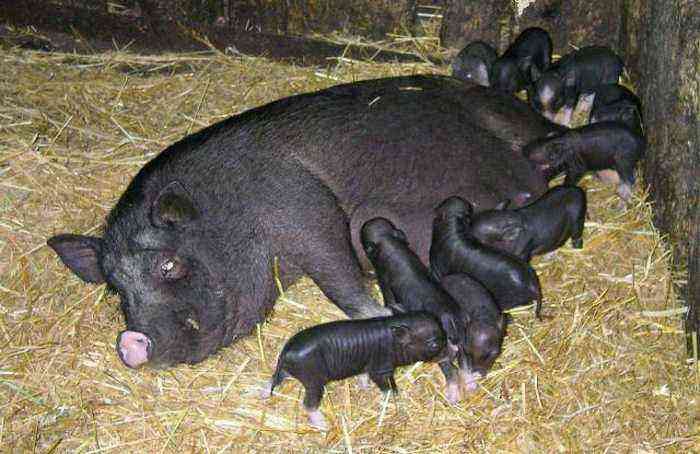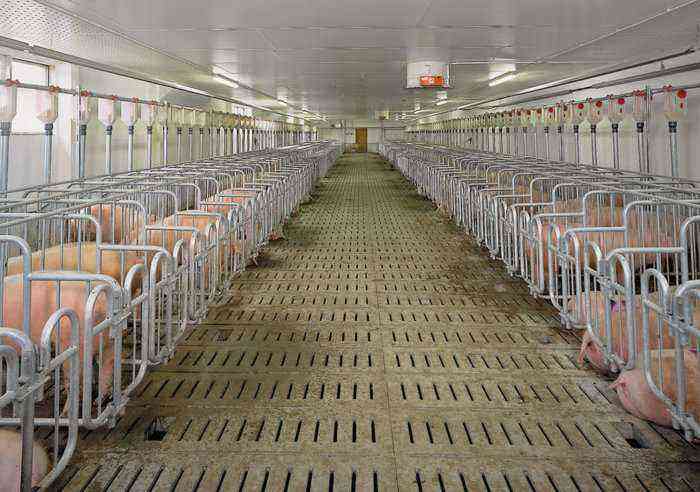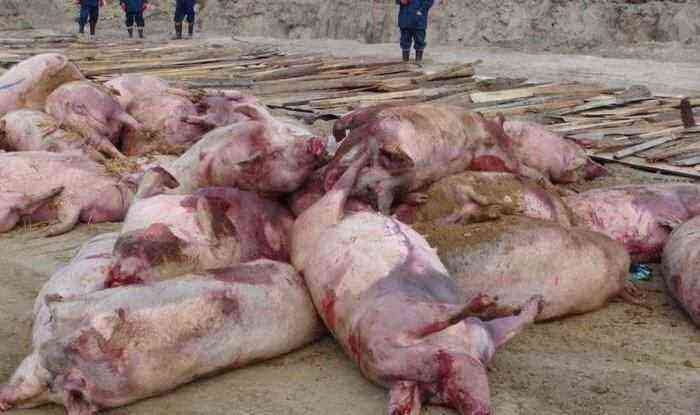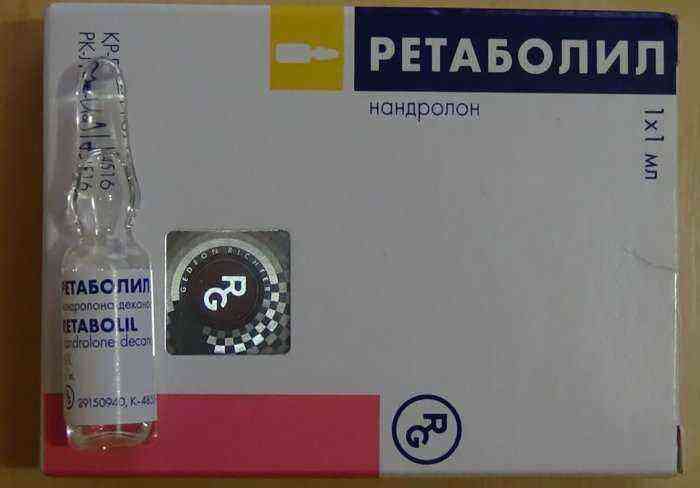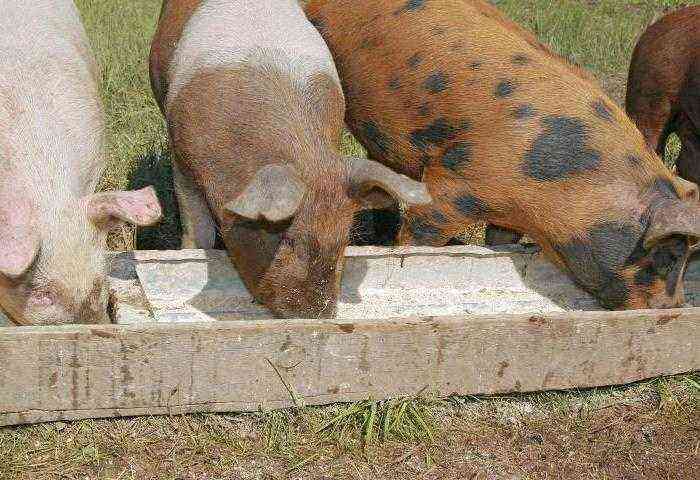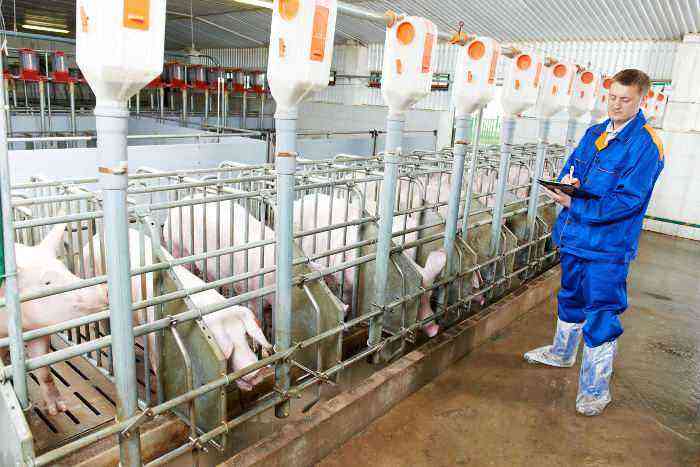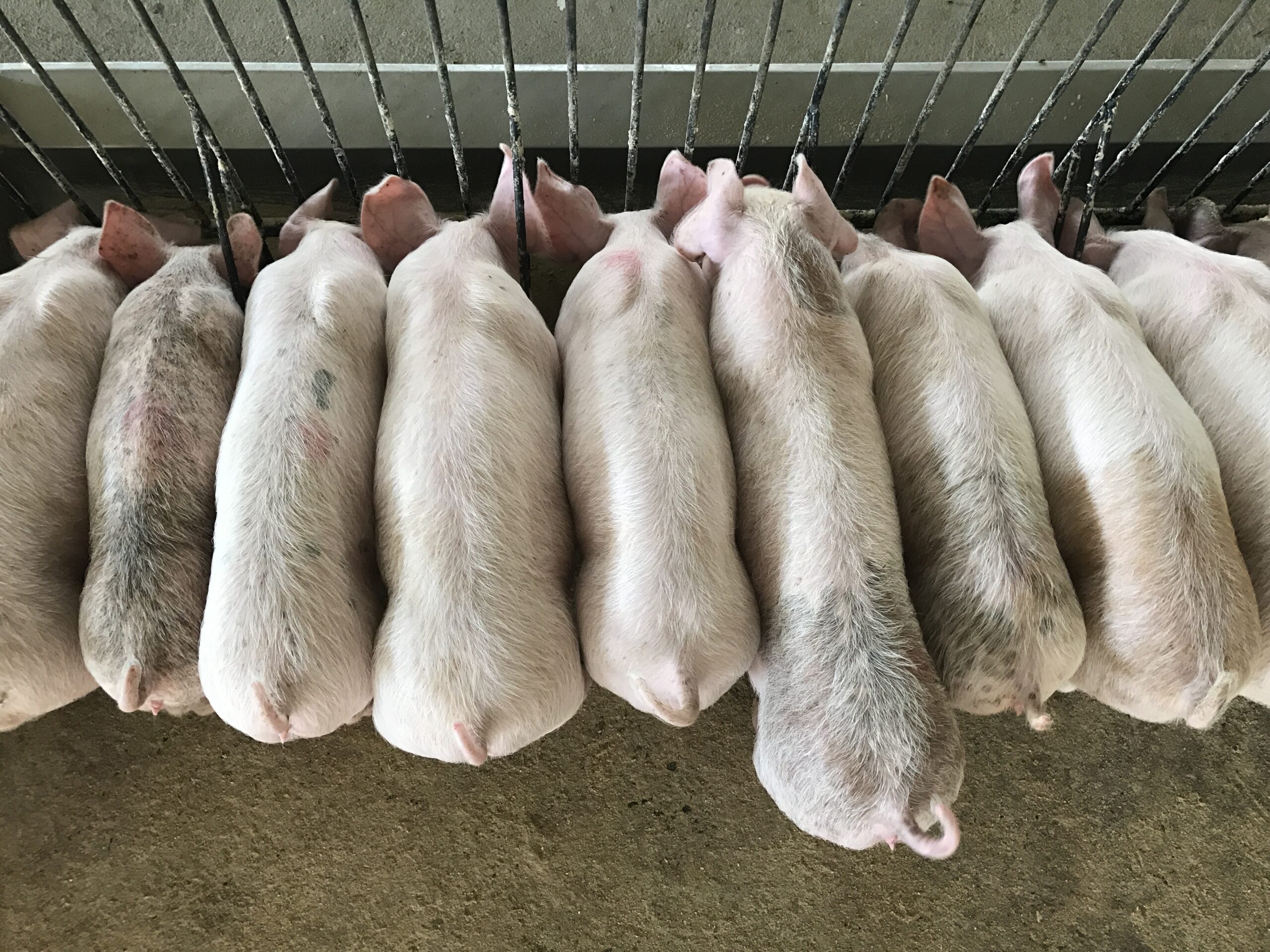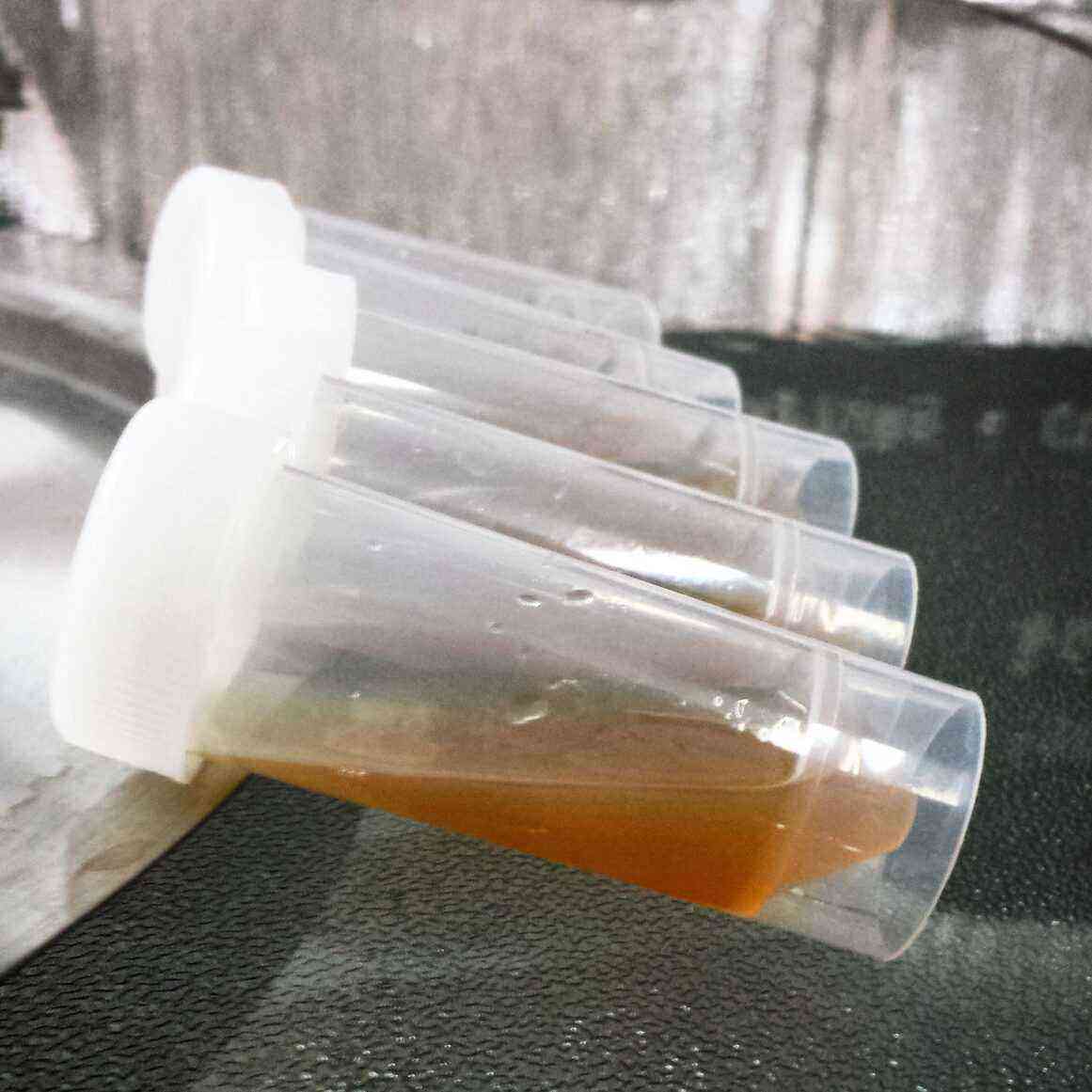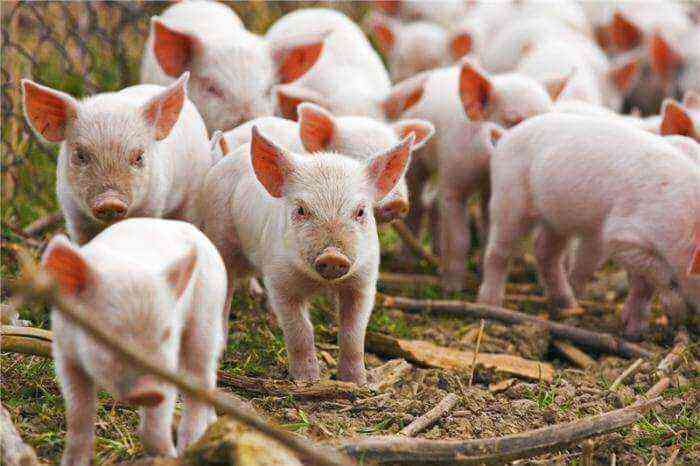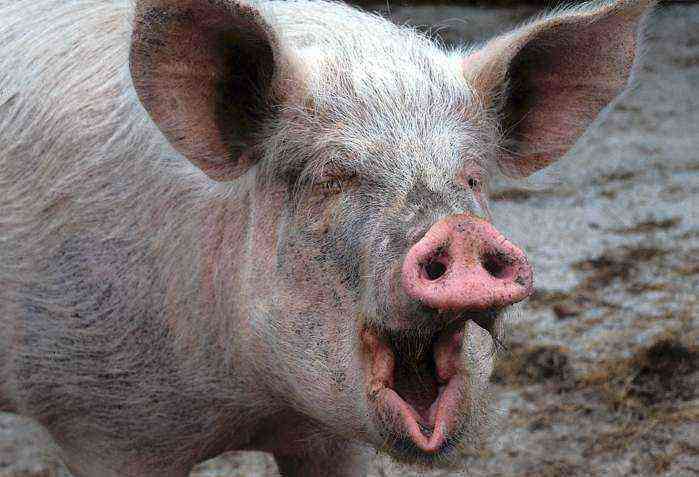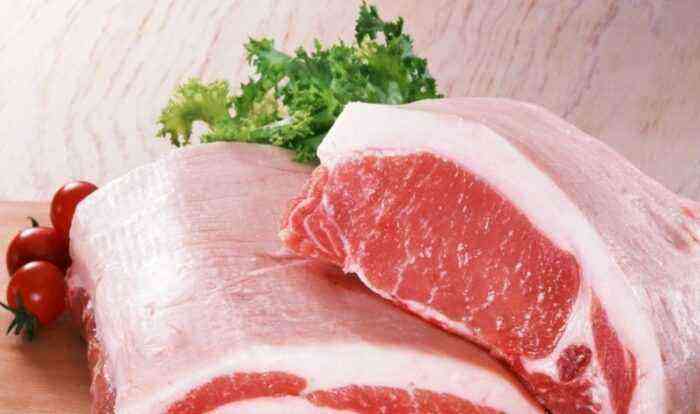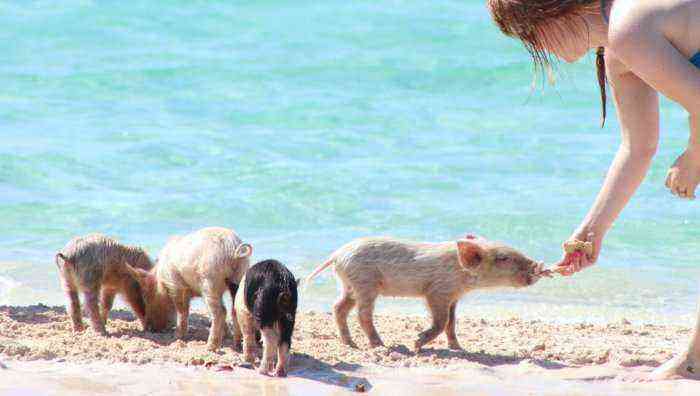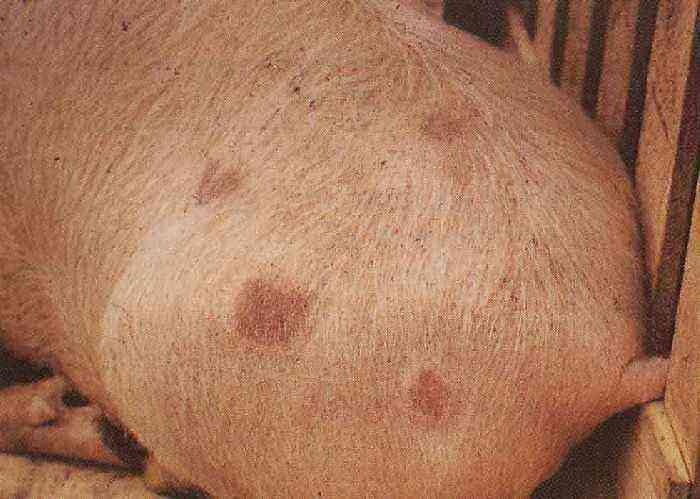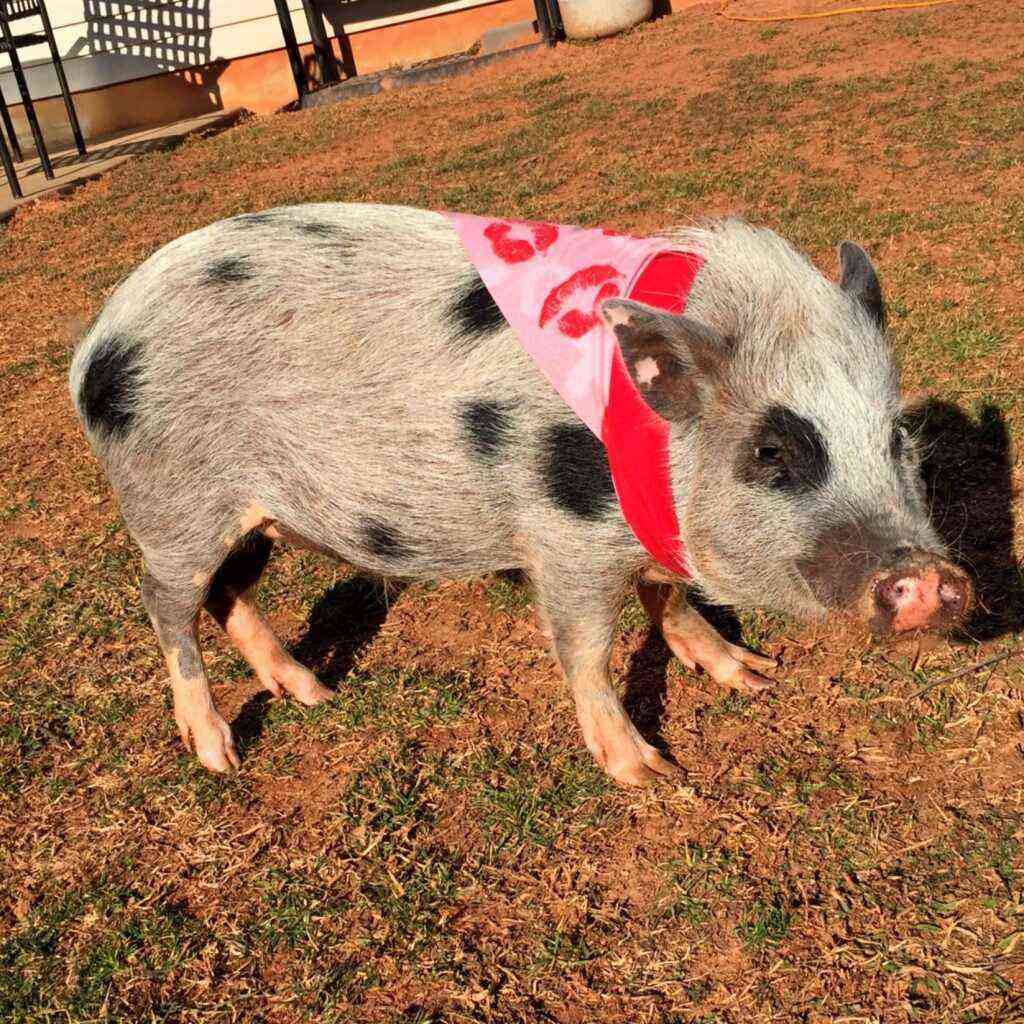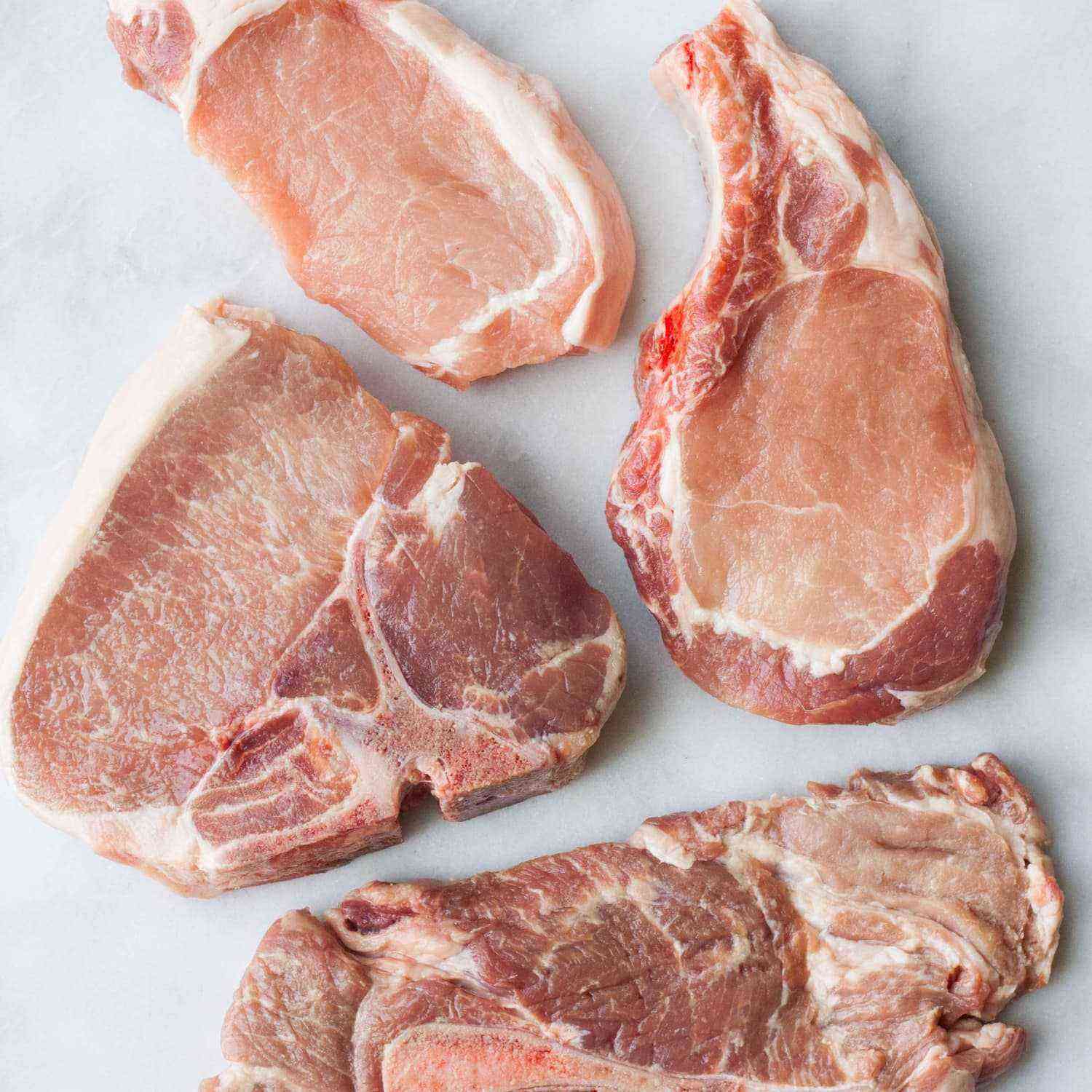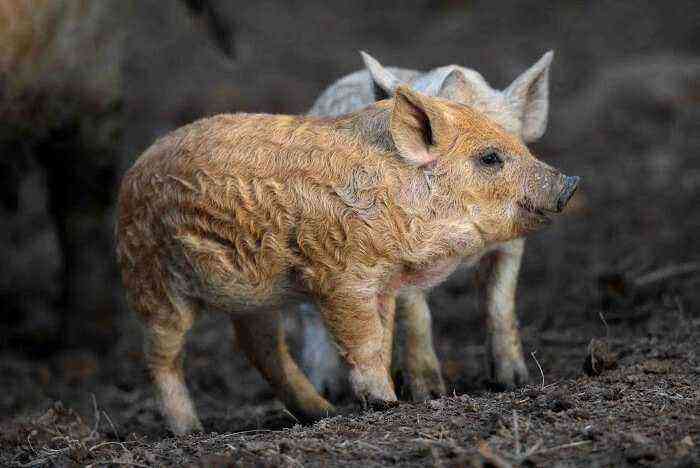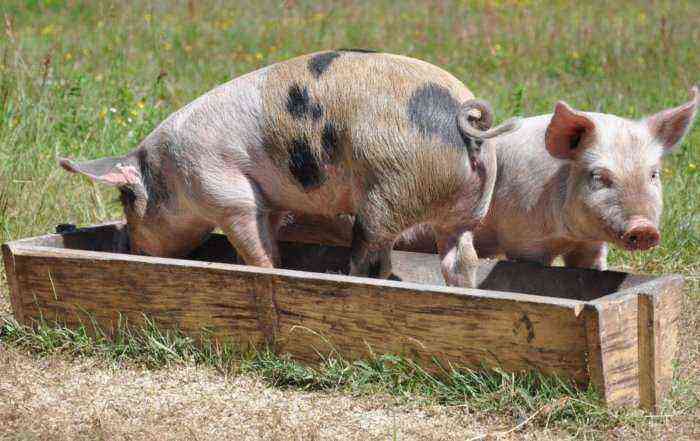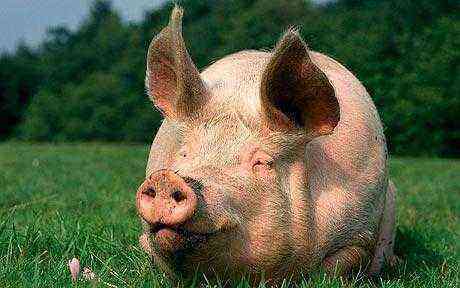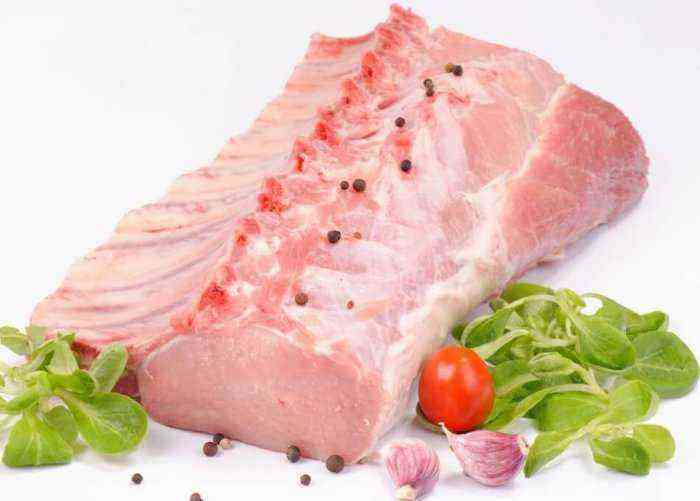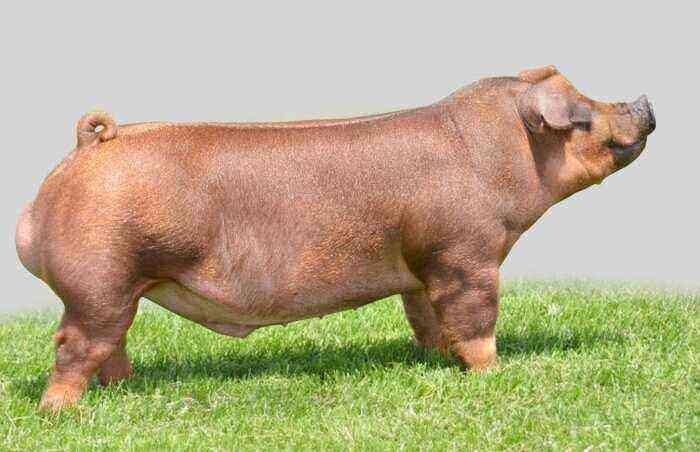According to their typical characteristics, pig breeds are divided into: universal, meat and greasy. Meat breeds are elite because of the significant amount of lean meat and a very small layer of subcutaneous fat. The most striking representative of these typical features of pigs is the Landrace breed.
Pig Landrace
Characterization
It will not be difficult for an experienced farmer to identify the Landrace breed, since these pigs have certain features: they are small in stature with a long body and a small head. According to their description, pigs of this breed are often correlated with the Duroc breed. But they have differences in coat color and its density.
Pigs Landrace belong to the meat breed. And speaking about the main characteristics of this breed, it should be noted that the meat of Landrace pigs is not only tasty, but also lean, and fat grows in a small layer (up to 2 cm). And thanks to the excellent taste of bacon, the high productivity of sows, the ease of keeping these pigs, they are successfully bred in different parts of the country.
Origin
Landrace piglets were first bred over a century ago in Denmark. The breeders took a large breed as a basis – a white pig, and crossed it with a Danish lop-eared specimen. As a result of such selection work, the distinctive meat characteristics and physique of the species taken as the basis were passed on to offspring.
And in 1907, the offspring selected by breeders confirmed the stability of their specific qualities, the breed received its official name. Gradually, scientists improved the performance of the breed: they worked to increase the daily weight gain; improving the profitability of the breed.
Work on improving the breed continues to this day. Breeders liked the resulting offspring with stable traits so much that the exported specimens served as progenitors for local varieties. So, now there are Landrace hybrids all over the world.
There are Landrace hybrids in Russia as well. Breeders use this breed to develop hybrids with excellent fattening performance and product characteristics, crossing Landrace with the Mirgorod Pied pig or with the Breit breed.
Appearance
The Landrace pig breed has the following distinctive external features:

Knur breed Landrace
- Animals have thin, light, shiny bristles, through which the skin of a delicate pink hue shines through.
- The physique is strong. The body itself is elongated, the back is straight. The head of the pigs is small, the ears are hanging down, of medium size. Often the ears cover the eyes.
- The neck of pigs is long, powerful and fleshy.
- The legs are short but strong.
Landrace piglets are also distinguished by the outlines characteristic of representatives of the bacon breed. Since these are large-breed pigs, they grow up to two meters in length, and their chest girth reaches one and a half meters.
Productivity
Landrace is distinguished by high meat performance; at the output, the farmer receives at least 70% of pure meat. The fat of this breed is small (no more than 3 cm). An adult sow often grows up to 250 kg, and a wild boar is more than 320 kg.
The birth rate of piglets is also high, for one farrowing the sow brings from 10 to 15 piglets. Pigs Landrace survive well, quickly gaining weight. The average daily gain ranges from 700 grams to 1 kg. And already at the age of 180 days, piglets are able to weigh about 100 kg.
But high performance is impossible without the correct maintenance of these pigs. In order for the new offspring to quickly gain weight and the sows to give a large offspring, it is necessary to provide the pigs with good nutrition, and a barn suitable for keeping (the room must be maintained at a constant comfortable temperature for the animals, and the floor must be soft and dry).
Advantages and disadvantages
Based on all the qualities of Landrace pigs, scientists have formulated the advantages and disadvantages of the breed.
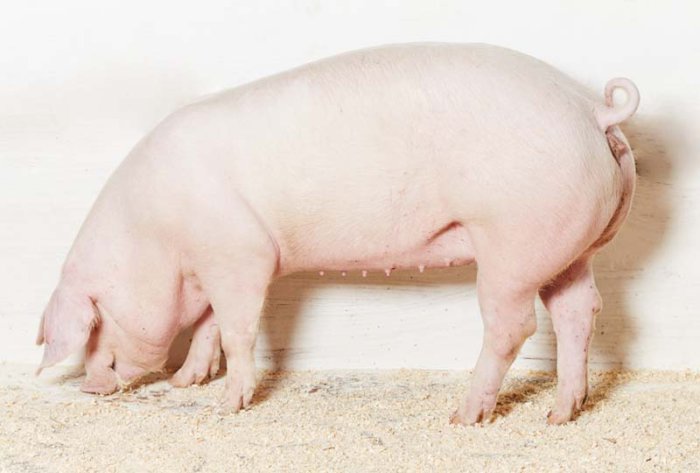
Looks like
The pluses include:
- High productivity and accelerated protein synthesis in young animals. With average feed costs, animals are able to give high rates of daily weight gain and high-quality lean meat yield. Breeding Landrace is profitable, piglets are able to reach slaughter weight in a short period of time (from 5 to 7 months after birth).
- High fertility. Sows of this breed are very caring mothers; very fertile and milky. Pigs of this breed are well crossed and fed, so that farmers can get hybrid offspring that are highly productive in terms of their performance.
- Friendliness. These animals are extremely friendly to humans and do not show aggression towards other members of the herd.
And the main disadvantages of the breed include:
- Skeleton problems. Due to the lack of skeletal structure, Landrace pigs have extremely weak hind limbs, so animals often suffer from joint damage. And if there is dampness on the floor in the paddock, then the risk of injury to the animal is high. Therefore, it must always be dry.
- mobile nervous system. Many factors can affect the fertility and health of an animal. Animals are very demanding on the regime, quality of food and care measures.
- The quality of bacon depends on the composition of the diet. Any failure in the diet of the animal causes a negative response and affects its productivity.
But with proper care, the negative aspects of the breed do not appear, and the positive ones more than compensate for their minor manifestations.
Feeding
When planning nutrition, it is necessary to select only high-quality feed. In addition to vegetable crops, pigs also need grain feed. In addition to food, silage, cake, bone meal are added, and milk components (skimmed milk, whey) are often used.

Oil cake
In addition to the basic requirements for the nutritional value of the feed, it is necessary to pay special attention to the quality of the feed. Feed consumption: 3,5 – 4 feed units per 1 kg of weight gain. You need to buy products from a reliable proven supplier or start producing feed on your own site. To fully provide 2-5 heads, it is enough to produce from only a few acres of the garden.
Important! There is also a certain mode of feeding animals: 2 times a day with a break of 10-12 hours. In winter, you can increase the number of meals up to 3. But it is impossible to overfeed pigs and give them feed that is not rationed, as this contributes to the accumulation of excess fat.
Breeding
Farmers use Landrace pigs to produce high quality lean meat. And since it is quite unprofitable to acquire thoroughbred piglets every time, most of them use the sow to produce the next offspring. And so that the breed does not suffer as its characteristics when crossing, it is necessary that both parents be purebred. Often farmers cross this breed with Duroc pigs. Hybrids take the best qualities from their parents, adapt well to survival and grow quickly.
To get a rich and able to survive offspring, it is necessary to put a pregnant sow on a special diet and protect it from other animals. Feeds for sows should be selected especially carefully, be nutritious and rich in succulent products. Pregnancy in Landrace lasts no more than 115 days. And since this breed is large, sows often have complications during childbirth. Therefore, at the first signs of labor activity, it is necessary to invite a veterinarian. It will help not only give birth to a pig, but also process the umbilical cord to piglets properly. Since the pig is heavy and large, it can accidentally crush the piglets, they must immediately be moved to a separate pen. And every 2 or 3 hours to release for feeding, after the sow settles down.
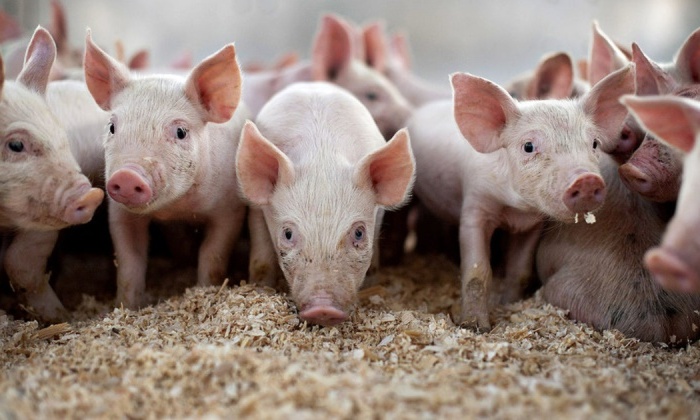
Landrace piglets
During this period, the uterus should be carefully monitored, at the first sign of aggression, piglets must be isolated, as she can eat them. The duration of lactation in a pig is no more than 30 days, then the young animals are gradually transferred to normal fattening. The composition of the feed must include both plant products and dairy products.
Due to their typical features, pigs of this breed have won the love of farmers in all corners of the planet. These animals are quite unpretentious in care, and give unusually high rates of offspring.
